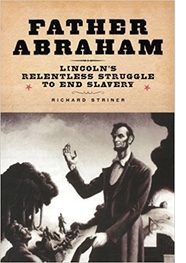America in Crisis: Is a Second Civil War in the Making?

Women's March, Seattle January 2017
Second in a series: America in Crisis
There is something about the behavior of Donald Trump in the White House that is almost hallucinatory. What is to be done about a president who seems impervious to normal standards of decency, who makes name-calling and ranting our new normal, and who gravitates toward extremists? There is beastiality in this that challenges the courage and imagination of ordinary people.
 As
to the people who voted for Trump, one can only wonder if they will
ever come out of denial. How can they possibly enjoy a situation
that makes us the
laughing stock of the world? It is almost as if Trump’s
supporters belong to a different nation altogether.
As
to the people who voted for Trump, one can only wonder if they will
ever come out of denial. How can they possibly enjoy a situation
that makes us the
laughing stock of the world? It is almost as if Trump’s
supporters belong to a different nation altogether.
A different nation.
One of the most demoralizing things about America today is the feeling that we are separating into “two nations,” two estranged populations who regard one another with a hatred that defies conciliation.
There are plenty of divisions in our polity that will never vanish completely, divisions we have lived with for years. Not the least of them is the perfectly normal division that results from our two-party system. But there was something quite different in 2016 as the “blue state” Americans and “red state” Americans assailed one another. There was something very different as, according to many accounts, the candidacy of Trump led to family break-ups and divorces. There was something about the election of 2016 that cut like a knife.
It transcended other sorts of divisions, even those of ideology and religion.
For instance, one of the stunning facts about the last election was the way that so many Christian evangelicals voted for a candidate who demonstrated scorn for some of their values. Of course, the phenomenon of “holding one’s nose” and voting for the lesser of two evils is not unusual. But if the content of much of the on-line support for Donald Trump is to be taken seriously, something more indicative was happening. “Lock her up,” was the chant at the Trump rallies as Hillary Clinton was vilified for the mistake of using the wrong email server. “A basket of deplorables,” was Clinton’s characterization of 50% of Trump’s supporters. Granted, there were issues at stake: Clinton did make admitted mistakes that had legal implications, and some of Trump’s supporters, such as the “alt-right” neo-Nazis, must indeed be held by all decent people to be deplorable.
But this was not an election in which such issues could be argued out on rational grounds. Abetted by the out-of-control technologies of social media, analysis for a great many people was impossible, unnecessary, and an afterthought. What seemed to matter above all else was the rush of immediate gratification, the rush of expressing one’s hatred for the likes of . . . them.
How did we get to this point?
One of the most important causes of our deep division is the rise of the radical right. Once before, in the McCarthy era, this group became very powerful — until their power was reduced by the moderate and popular policies of Dwight D. Eisenhower. After the candidacy of Barry Goldwater crashed and burned in 1964, the Republicans reassembled as a party containing a considerable amount of ideological diversity.
Something comparable happened at the other end of the spectrum, in the days when the radical left surged forward in the late 1960s under the banner of groups like the S.D.S., the Weathermen, and the “Symbionese Liberation Army.” But the New Left never controlled the Democratic Party as the radical right had taken brief but unmistakable control of the Republican Party in 1964.
In any case, the surges of extremism on the right and left were short-lived. Both parties by the 1970s encompassed a spectrum of voters and leaders who ran the gamut from “conservative” to “moderate” to “liberal.” And within each one of those ideological labels could be found a welter of people who agreed with one another on some things while disagreeing on others. But this situation has changed.
The Democratic Party by the time of Bill Clinton and Barack Obama had stabilized as a force for moderation with a slightly leftward tilt. But beginning with the Reagan presidency, Republicans lurched insistently rightward to the point where the party was veritably transformed within one generation by the radical right. Republicans today who believe in compromise and consensus — the values of Dwight D. Eisenhower, surely — no longer recognize their party. When one recalls the Republican liberals of the 1960s — Jacob Javits, Nelson Rockefeller, John Lindsay — it is impossible to find their counterparts now. Liberals and moderates have been driven out of the party or else reduced to a state of powerlessness as the shrill and fanatical forces of the right have taken over. Trump’s most powerful rival for the Republican presidential nomination in 2016 was Ted Cruz. The days when the Republicans could nominate people like John McCain and Mitt Romney appear to be — at least temporarily — over.
Putting aside for a moment the policy agenda of the radical right, there is one thing about these people that is terribly clear: they are haters. Their agenda is to dominate, to persecute, to revel in others’ degradation. They smile when they hear that undocumented immigrants who have married, had children, and started businesses here in America are being deported. They like to hear such things, it makes them happy. There is an insensate cruelty in the radical right, a cruelty that poisons their minds. These people are looking for victims, especially those who are helpless.
They “take no prisoners.” They will never give ground or say “enough.” They seek not only to defeat liberalism but to destroy a fabric of enlightened compromises that Republican moderates have built.
And so it was that in 2013, Steve Bannon, now a key adviser to Trump, said he wanted “to bring everything crashing down, and destroy all of today’s establishment.” So the Trump administration undercuts federal efforts that command overwhelming support. Agencies such as the EPA and NIH are under attack. Meanwhile, in states where they now possess both the legislature and the governorship, Republicans are planning to ram through some of the most extreme parts of the radical right’s agenda, to try to ban abortions with no exceptions whatsoever — even in cases of incest or rape — and to protect the “right” of psychotics to obtain deadly weapons whenever they feel the itch to kill.
And at the national level, they continue a slow but incessant campaign to undercut Social Security and Medicare in hopes of privatizing one or both of those systems sometime in the future.
In short, the radical right has been tearing this nation apart, and they have no intention of stopping. The Republican Party has been taken over by people who would, if they could, force America’s majority — the majority who voted for Hillary Clinton — into a way of life they find abhorrent.
But let’s be fair. One has to acknowledge that some of Trump’s supporters, especially Christian evangelicals, feel as if they have been subjected to the treatment just described: they believe that they have been forced to go along with a way of life that they reject. Indeed, people on both sides of this culture war believe that their opposite numbers are people who “don’t understand what America is all about.”
If this isn’t a formula for civil war, what is? Granted, the opposite sides in our first civil war were aligned geographically by states. And with all due respect to the importance of the “blue state/red state division,” a struggle for control is going on right now in a great many states, and the outcome cannot be predicted.
But if the California situation is indicative, we may be in trouble. On the one hand is the left-of-center effort to detach California from the nation through secession. On the other hand, a right-of-center counterattack seeks to split California in two. In both cases, people feel that their entire way of life is in jeopardy. In the meantime, Eisenhower’s “middle way” is in ruins.
We
are in trouble.